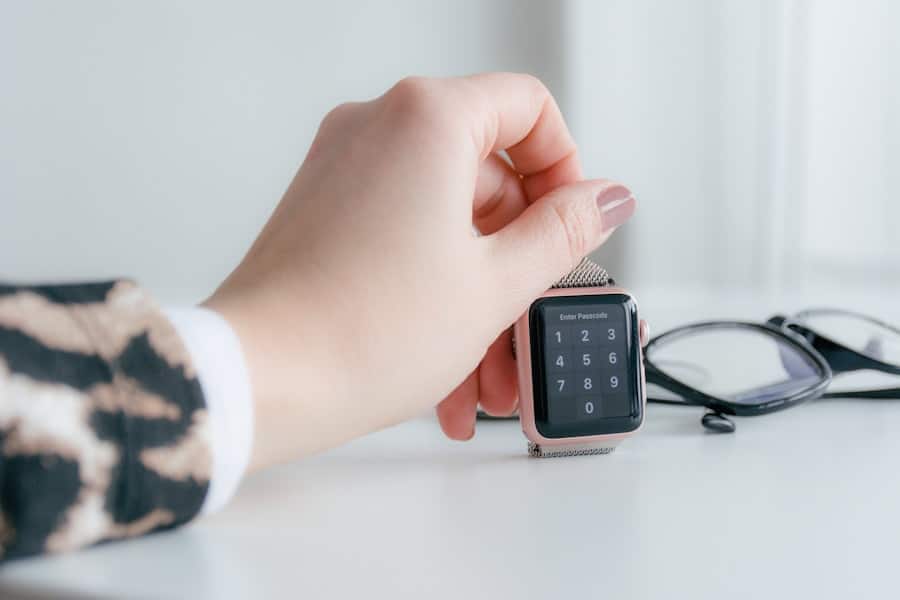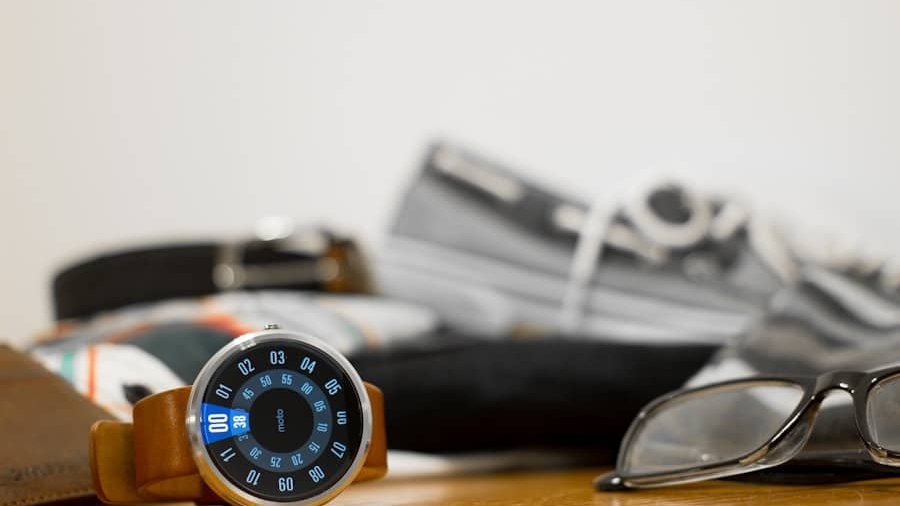The integration of wearable technology into healthcare has witnessed a remarkable surge over the past decade, driven by advancements in technology and a growing emphasis on patient-centered care. Devices such as smartwatches, fitness trackers, and specialized medical wearables have transitioned from niche products to mainstream tools that empower patients and healthcare providers alike. This evolution is not merely a trend; it represents a fundamental shift in how health data is collected, analyzed, and utilized.
The proliferation of mobile health applications and the Internet of Things (IoT) has further accelerated this transformation, enabling seamless connectivity between patients and healthcare systems. Wearable technology in healthcare encompasses a wide array of devices designed to monitor various health metrics, including heart rate, blood pressure, glucose levels, and physical activity. For instance, devices like the Apple Watch and Fitbit have incorporated advanced sensors that allow users to track their health in real-time.
These wearables not only provide immediate feedback but also facilitate long-term health monitoring, which can be crucial for early detection of potential health issues. As a result, healthcare providers are increasingly leveraging these technologies to enhance patient engagement, improve outcomes, and reduce costs associated with chronic disease management.
Key Takeaways
- Wearable technology is increasingly being used in healthcare for monitoring and managing patient health.
- Remote patient monitoring using wearables allows for continuous tracking of vital signs and symptoms, leading to early intervention and improved outcomes.
- Wearables play a crucial role in managing chronic diseases by providing real-time data and enabling personalized treatment plans.
- The integration of wearables in telemedicine has expanded access to healthcare services, especially in remote or underserved areas.
- Challenges in remote patient monitoring with wearables, such as data security and patient compliance, can be overcome with proper strategies and technology.
The Benefits of Remote Patient Monitoring
Real-time Health Data Collection
healthcare professionals to gain valuable insights into a patient’s condition without the need for frequent in-person visits.
Enhanced Autonomy and Engagement
patients with chronic conditions can use wearables to transmit vital signs directly to their healthcare team, enabling timely interventions when necessary. Moreover, RPM empowers individuals to take a proactive approach to managing their conditions by setting personal health goals, tracking their progress, and receiving reminders for lifestyle changes.
Improved Health Outcomes and Cost Savings
This empowerment can lead to improved adherence to treatment plans and better overall health outcomes. Additionally, RPM can significantly reduce healthcare costs by minimizing hospital readmissions and emergency room visits, as early detection of potential complications allows for timely intervention.
The Role of Wearables in Chronic Disease Management

Chronic disease management is one of the most promising applications of wearable technology in healthcare. Conditions such as diabetes, heart disease, and obesity require ongoing monitoring and lifestyle adjustments, making wearables an ideal solution for both patients and healthcare providers. For instance, continuous glucose monitors (CGMs) have revolutionized diabetes management by providing real-time glucose readings that help patients make informed decisions about their diet and insulin use.
These devices not only improve glycemic control but also reduce the risk of severe complications associated with diabetes. In addition to diabetes management, wearables play a crucial role in cardiovascular health. Devices equipped with electrocardiogram (ECG) capabilities can detect irregular heart rhythms, alerting patients and their healthcare providers to potential issues before they escalate into serious problems.
Furthermore, wearables that track physical activity and sleep patterns can provide valuable insights into lifestyle factors that contribute to chronic diseases. By integrating this data into personalized care plans, healthcare providers can tailor interventions that address the unique needs of each patient, ultimately leading to better management of chronic conditions.
The Impact of Wearables on Telemedicine
The rise of telemedicine has been significantly bolstered by the advent of wearable technology. As healthcare systems increasingly adopt virtual care models, wearables serve as essential tools for facilitating remote consultations and monitoring patient progress. Telemedicine allows patients to connect with healthcare providers from the comfort of their homes, reducing barriers to access and improving convenience.
Wearables enhance this experience by providing real-time data that can be shared during virtual appointments, allowing for more informed discussions about treatment options and health management strategies. For example, during a telehealth visit, a physician can review a patient’s heart rate variability data collected from a wearable device while discussing symptoms or concerns. This integration of data not only enriches the consultation but also fosters a collaborative approach to care.
Patients feel more engaged when they can see how their daily activities impact their health metrics in real-time.
Overcoming Challenges in Remote Patient Monitoring with Wearables
Despite the numerous benefits associated with remote patient monitoring through wearables, several challenges must be addressed to maximize their potential in healthcare settings. One significant hurdle is ensuring the accuracy and reliability of the data collected by these devices. Variability in sensor performance and user error can lead to discrepancies in health metrics, which may affect clinical decision-making.
To mitigate this issue, manufacturers must adhere to rigorous testing standards and regulatory guidelines to ensure that their devices provide accurate readings. Another challenge lies in the integration of wearable data into existing electronic health record (EHR) systems. Many healthcare providers struggle with interoperability issues that hinder the seamless exchange of information between different platforms.
To overcome this barrier, stakeholders must prioritize the development of standardized protocols for data sharing and invest in technologies that facilitate interoperability. Additionally, training healthcare professionals on how to interpret wearable data effectively is crucial for maximizing its utility in clinical practice.
The Future of Wearables in Healthcare

The future of wearable technology in healthcare is poised for significant growth and innovation as advancements continue to reshape the landscape. Emerging technologies such as artificial intelligence (AI) and machine learning are expected to enhance the capabilities of wearables by enabling predictive analytics and personalized health insights. For instance, AI algorithms can analyze vast amounts of data collected from wearables to identify patterns and predict potential health issues before they arise.
This proactive approach could revolutionize preventive care and chronic disease management. Furthermore, the development of new sensors and materials will likely expand the range of health metrics that wearables can monitor. Innovations such as biosensors capable of detecting biomarkers through sweat or skin temperature could provide deeper insights into an individual’s health status.
As wearables become more sophisticated, they may also integrate features such as medication reminders or telehealth capabilities directly into the device interface, further streamlining patient care.
Ethical and Privacy Considerations in Remote Patient Monitoring
As wearable technology becomes increasingly integrated into healthcare systems, ethical and privacy considerations must be at the forefront of discussions surrounding remote patient monitoring. The collection and transmission of sensitive health data raise concerns about patient privacy and data security. Healthcare organizations must implement robust cybersecurity measures to protect patient information from unauthorized access or breaches.
Additionally, clear policies regarding data ownership and usage must be established to ensure that patients understand how their information will be utilized. Informed consent is another critical aspect of ethical considerations in remote patient monitoring. Patients should be fully aware of what data is being collected, how it will be used, and who will have access to it.
Transparency is essential in building trust between patients and healthcare providers. Furthermore, addressing disparities in access to wearable technology is vital to ensure that all patients benefit from these advancements in healthcare. Efforts must be made to provide equitable access to wearables for underserved populations who may lack the resources or knowledge to utilize these technologies effectively.
Implementing Wearable Technology in Healthcare Settings
The successful implementation of wearable technology in healthcare settings requires a strategic approach that encompasses various stakeholders, including healthcare providers, technology developers, and patients themselves. First and foremost, healthcare organizations must assess their specific needs and identify which types of wearables align with their goals for patient care. This may involve piloting different devices within specific departments or patient populations to evaluate their effectiveness before broader adoption.
Training is another critical component of implementation. Healthcare professionals must be equipped with the knowledge and skills necessary to interpret data from wearables accurately and integrate it into clinical workflows. This may involve developing educational programs or resources that focus on best practices for utilizing wearable technology in patient care.
Additionally, fostering collaboration between technology developers and healthcare providers can lead to innovations that address real-world challenges faced by clinicians and patients alike. In conclusion, the rise of wearable technology in healthcare represents a transformative shift towards more personalized and proactive patient care. By harnessing the power of remote patient monitoring, wearables play a crucial role in chronic disease management, telemedicine, and overall health outcomes.
However, addressing challenges related to data accuracy, privacy concerns, and implementation strategies will be essential for realizing the full potential of these technologies in improving healthcare delivery.
A related article to “How Wearables Are Empowering Remote Patient Monitoring” is “How to Choose a Smartphone for Chief Executive” from

